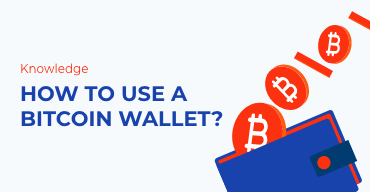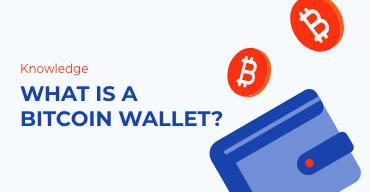Today, cryptocurrency-related activities such as Initial Coin Offerings (ICOs) are some of the hottest topics on the internet. According to a 2018 report by Forbes, blockchain technology that underpins cryptocurrencies is among the top 10 digital transformations expected to take root in 2019 and the coming years.
But that’s not all.
We’ve all witnessed the rise of cryptocurrency-related activities over the last couple of years in terms of trading volumes and market caps of various assets reaching all-time high levels. In addition, 2018 has seen an increase in the number of crypto exchanges which started listing even less known crypto coins and tokens.
In case you don’t know what a token is, this is a tradeable or utility asset created on a blockchain network and usually established through an ICO issuance.
Such cutting-edge technology could be daunting to explain in simple terms. However, in this post, we will try to unpack everything there is to know about ICOs. In the end, you should be hopefully as good as a pro in this regard.
Before we get to the fleshy parts of this guide, let’s briefly check Jeff Tennery’s statement about the subject. It neatly reflects the basic nature of ICOs:
“ICO’s are also democratizing early-stage investing, allowing a wider pool of investors to participate. Token offerings shift power and control to the blockchain rather than one or two influential investors. And by diversifying the cap table from the onset of a company’s inception, founders can focus on building utility value for their token rather than appease large investors’ objectives. Venture capital is moving farther downstream to Series A or later allowing ICO’s to play a pivotal role in helping a startup get off the ground.”
So, what do you think? Any chance you agree with him at this point? Before you even answer that, let’s first understand what we’re talking about.
What Is an Initial Coin Offering (ICO)?
Companies raise funds primarily for growth and expansion into different markets. Funding could take many forms, but the vast majority of the present-day crypto startups prefer the ICO model.
Broadly speaking, it has some similarities with traditional, well-established funding model known as Initial Public Offering (IPO). IPOs are used by conventional companies to raise funds by receiving shareholders’ funds in exchange for shares of the company. However, as you will later find out, this is the main departing point between IPOs and ICOs.
So, what is ICO? Simply said, ICO refers to a form of fundraising whereby startups sell their underlying crypto tokens in exchange for investor funds to bring their projects to life. These tokens could be later traded on crypto exchanges.
ICO investors buy into a project hoping that its token will be valuable once the business starts growing. The currency received by the ICO issuers is used to develop their agenda which sometimes includes launching own cryptocurrency.
In the beginning, ICOs were not bound by as many laws as IPOs are, which is why so many digital startups preferred collecting funds in this way, without having to undergo through complicated legal processes.
So far so good? Let’s delve even deeper into this subject.
An In-Depth Analysis of ICOs
The above are the basics of ICOs. However, there are more complex aspects of this funding method.
What you need to be aware of is that ICOs come with an immense number of opportunities for enthusiasts, but they also bring risks and challenges.
A good number of investors subscribe to an ICO without taking as much time to study the viability of the project. Most of them flow with the craze that comes with a project, forgetting that each ICO issuer works hard day and night to create as much hype as possible for their startup, even if its business plan is not quite viable.
In the end, such investors end up losing investment or even worse – getting scammed. ICOs have become a hub for fraudsters due to the lack of heavy regulations. For this reason, one has to take extra caution and be able to differentiate between genuine and scam ICOs.
In the next stages of this guide, we’ll briefly explore the ICO processes, the ins and outs, the benefits and downsides, and a couple of risks associated with this method of raising funds.
The ICO Process
The starting point of any ICO is creating a whitepaper that acts as the blueprint of the whole project. A whitepaper plays a number of roles including highlighting the objectives of the project, the issue it aims to resolve, the marketing aspect, and the future plans of expansion.
It also claims the amount of funds needed, the number of tokens that will be retained by the issuers, the amount that will be offered to the investors, as well as the mode of payment for the tokens.
A whitepaper is not a standard document because it could contain an elaborated plan on hundreds of pages. In other cases, it could be as brief as less than 10 pages, depending on the amount of information the issuers are willing to disclose to the public.
As soon as the whitepaper is completed, the issuers begin the campaign to create awareness about the project on various platforms such as Medium, BitcoinTalk, Reddit, Telegram, and others. Here, the ICO issuers will try as much as possible to hype their project to the community by stating the viability of their project.
If the project fails to create as much hype as it needs to get members to subscribe, it usually collapses, and the ICO comes to an end.
Also, if the amount raised is not enough to finance a project, depending on what its whitepaper states in such a scenario, the ICO might also be considered a failed one.
But if the funds are received according to the plan, then the project is considered successful and the money is used to fund the project from scratch or to finalize it, depending on what the owners had initially done.
IPOs vs. ICOs
Tokens vs. Shares
As we noted earlier, ICOs attract investors to buy tokens that will be later traded on crypto exchanges. These tokens are not shares of the startup, and the person who buys them does not buy any part of the company.
IPOs, on the other hand, do not deal with tokens but shares. Investors who participate in an IPO buy a part of the company, hoping that its shares will become valuable in the future.
It is important to realize this difference – by owning a startup’s tokens you are not a stakeholder, that is, you cannot influence its business plans, even if you purchased more than 50% of the tokens.
In addition to this difference, these two funding models have different structural components.
Centralized vs. Decentralized Structure
The first common difference is about governance structure. While IPOs are centralized forms of funding with heavy regulations, ICOs are decentralized without as many regulations. However, note that, contrary to public opinion, ICOs are not the Wild West as they used to be.
Nowadays, you need first to study legal regulations of the country where the ICO is registered, and then invest according to these rules. Ignoring them will get you into legal troubles.
General vs. Restricted Public
Another crucial difference between ICOs and IPOs is their availability to the general public. In most cases, ICOs are open to everybody, regardless of their country of residence or social status. On the other hand, participating in IPOs usually requires membership in professional investment associations or hiring a middleman company.
Now that we understand the main differences between IPOs and ICOs let’s look at the benefits of ICOs.
ICO Benefits to Investor
- Minimal entry barriers: ICOs offer an opportunity for anyone willing to invest in a startup to do so without having to go through all the red tape associated with other fundraising methods such as the IPOs. The very nature of ICOs eliminates the tedious processes associated with startup funding, thereby reducing the barriers to entry.
- The possibility of a relatively high return: We have seen ICOs that brought enormous ROI to investors. If you do the homework and carefully study the startup you’re planning to invest in, you could earn a real fortune once it becomes mainstream.
- Simple to use and participate: Participating in an ICO is as easy as apple pie. All you need to do is to get familiar with crypto wallets, crypto exchanges, and general cryptocurrency concepts. If you know nothing about these, it will take you a few hours of research to learn the basic stuff.
- Not liable to any party but yourself: Unlike IPOs, participating in ICOs does not require writing reports, having bookkeepers and accountants, or a registered investment company. You can invest on your own and keep track of the funds by yourself. Obviously, this is a much cheaper and much more efficient option than IPO.
- Transparency of transactions: In case you invest in a legitimate startup, you will be able to monitor your funds all the time. Blockchain-based monetary transactions entail transparency, meaning that all parties could check at any time the status of their and others’ funds. This is preventing startup you’ve trusted your money to abuse it or use for something else other than growing the business.
The Downside and Risks of ICOs
Many businesses have successfully established life-changing projects using ICOs. In fact, according to stats, the first ever ICO managed to raise 5,000 BTC (valued at around $18.7 million today), despite this mode of funding being entirely new back in 2013.
Despite this and other success stories, the level of frauds associated with ICOs is quite high – a lot of investors have been fleeced of their hard-earned money in the name of ICOs. Lack of a regulatory framework has made it impossible to get refunds, and many investors are guilty of not being careful enough with investments.
But not all is lost. State bodies such as the US SEC have been keen on implementing some forms of a regulatory framework to manage the sector that is slowly becoming a den of scammers. For instance, only security tokens could be listed on the US exchanges and must abide by the regulation of the host exchanges.
International Ban
Another downside is that some countries are still reluctant to embrace the idea of cryptocurrencies. A good example is China which banned crypto operations within its borders. Cryptocurrency companies and investors who were initially based in China had to either shift operations to other crypto-friendly states or wind up operations altogether.
Tokens vs. Established Cryptocurrencies
Unlike established and widely accepted cryptocurrencies such as Bitcoin and Ethereum, tokens cannot be used as currencies. To spend tokens, you’ll first need to trade them for an accepted digital currency first such as the two.
Alternative Advertising Channels
It’s also important to mention that information about ICOs can not be obtained through well-known channels such as Facebook and Twitter, for example. These sites have banned all adverts relating to ICOs, stating that ICOs are fraudulent and potentially harmful to their users.
Promotions and advertising ICOs is moved to the crypto-friendly channels such as Telegram, Medium, BitcoinTalk, Reddit, Quora, and a few others.
Let’s see next how can you avoid scams.
How to Avoid Getting Scammed
Now that you know how quickly one could lose money by investing blindly in ICOs, apply the tips below to avoid getting scammed.
- Know the main ICO team. As much as it might be necessary to know each and every person behind a project you intend to invest in, it may not always be possible to do so. However, ensure that you get full knowledge of the core members of the ICO, including the developers, lawyers, promoters, as well as its CEO. If possible, get to know all the associated senior members.
- Understand the project’s goal. Just because a crypto startup plans to launch its cryptocurrency doesn’t mean it would become successful. In fact, there are more than 2,100 cryptocurrencies at the moment, the vast majority of which are worthless. Check the main objective of the project and decide whether it solves people’s needs on a global scale.
- Thoroughly analyze the legal terms and conditions of the ICO. Genuine ICOs have organized and transparent terms and conditions. They are typically elaborated and transparent to the investors. Watch out for terms and conditions that tend to be biased in the sense that they shift all liabilities to the investors without taking responsibility for the ICO team’s actions.
- Ensure that the project has an escrow service for storing the investor funds. Escrow service is meant to protect both parties from liabilities resulting from their business association. If the project isn’t viable or for some reason the deal goes south, either party or both could withdraw funds without losses. The escrow service will simply enhance a fair share of refund to both parties.
- Of course, the above metrics are not the only things to keep your tabs on when gauging whether or not an ICO is genuine. You’ll need to exercise extra caution by doing further due diligence on any project you wish to invest in. Consider reading online reviews on credible platforms such as Reddit, Medium, and BitcoinTalk.
Bottom Line
To sum up, there’s no denying that ICOs are risky, but they could also be rewarding. Staying informed and closely following all updates and rumors will help you to avoid being scammed. This guide has covered all the basic things you need to know about ICOs. The remaining bit, if any, should only top up what you already know.





